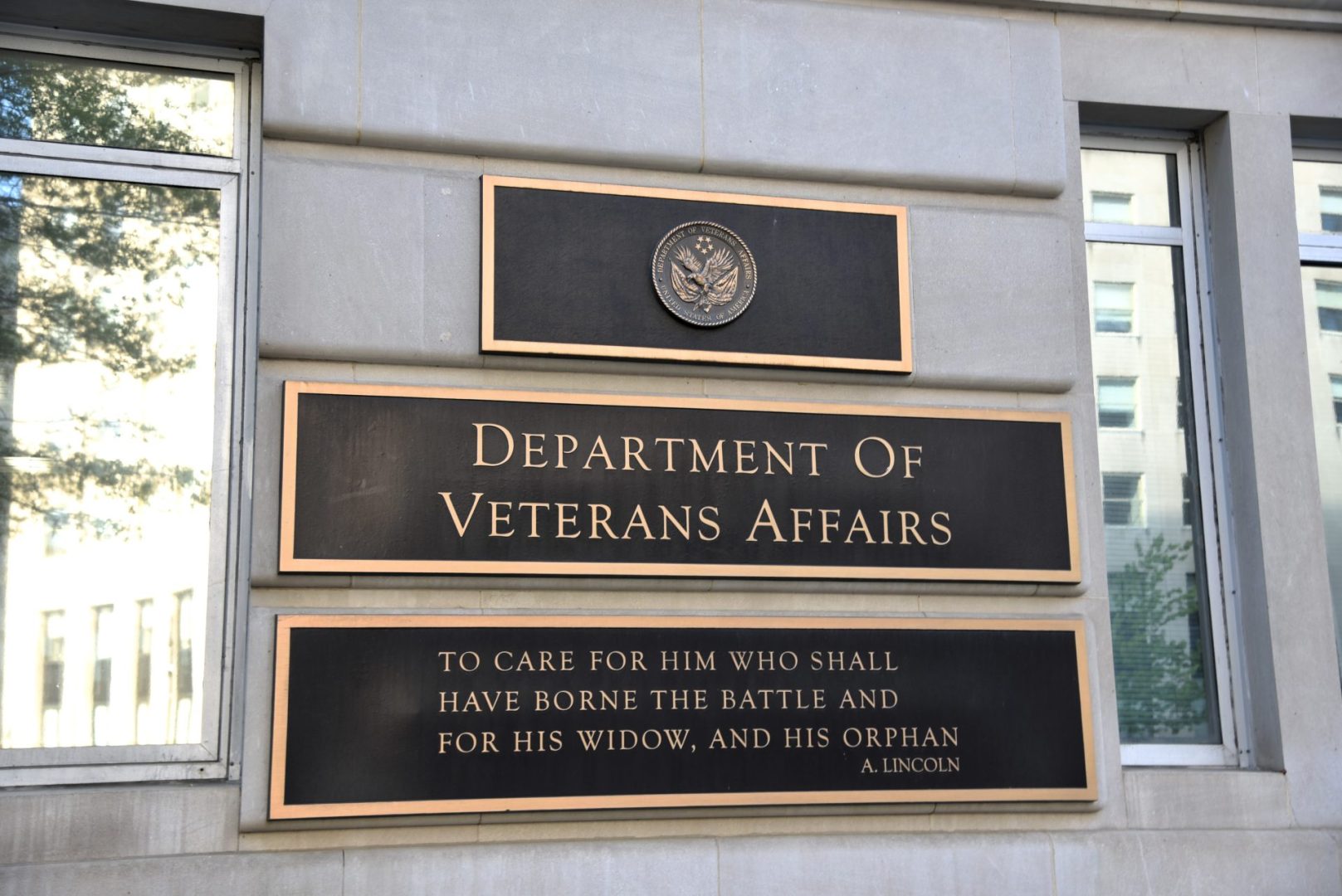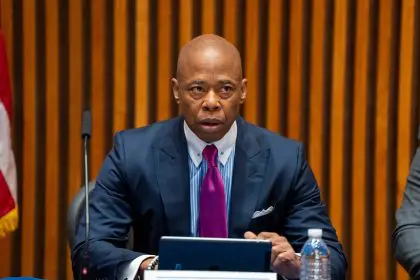The Department of Veterans Affairs has dramatically reversed course on a controversial plan to eliminate more than 76,000 federal jobs, bowing to intense pressure from lawmakers, unions, and advocacy groups who warned the massive workforce reduction would devastate services for America’s veterans. The stunning reversal represents one of the most significant policy changes since the Trump administration’s government efficiency initiative began targeting federal employees.
The original plan, which emerged from a leaked internal memo obtained by multiple news outlets in March, would have represented one of the largest federal workforce reductions in modern history. The proposed cuts, backed by the Department of Government Efficiency (DOGE), sparked immediate outcry from veteran advocacy groups and federal employee unions who warned of catastrophic impacts on healthcare and benefits for millions of veterans.
The VA’s July 7 announcement abandoning the massive layoff plan marks a significant victory for federal workers and their supporters, who mounted an aggressive campaign against the proposed cuts. The reversal demonstrates the power of organized opposition to challenge even the most ambitious government cost-cutting initiatives when they threaten essential services.
The ambitious plan that sparked nationwide outrage
The original VA downsizing proposal represented one of the most aggressive components of the broader federal workforce reduction initiative. The plan to eliminate more than 76,000 positions would have reduced the department’s workforce by approximately 20%, affecting virtually every aspect of veteran services from healthcare to disability benefits processing.
Internal documents revealed that the cuts were designed to achieve significant cost savings while streamlining operations across the vast federal department. However, critics immediately questioned whether such massive workforce reductions could be implemented without severely impacting the quality and availability of services for veterans who depend on VA support.
The leaked memo sparked immediate concern among veteran service organizations, who pointed out that the VA was already struggling with staffing shortages at many facilities. The prospect of eliminating tens of thousands of additional positions raised fears of longer wait times, reduced access to care, and potential disruptions to critical programs.
Federal employee unions quickly mobilized to oppose the plan, arguing that such massive layoffs would create chaos within the department and ultimately harm the veterans the VA is supposed to serve. The opposition gained momentum as more details about the scope and timeline of the proposed cuts became public.
Political backlash forces reconsideration
The VA’s decision to abandon the massive layoff plan came after months of intense political pressure from both sides of the aisle. Democratic lawmakers immediately condemned the proposal as irresponsible and dangerous, while some Republican members of Congress also expressed concerns about the potential impact on veteran services.
The controversy intensified when reports emerged that some workers on the Veterans Crisis Line, a suicide prevention hotline for veterans, were among those temporarily laid off as part of the broader workforce reduction efforts. The layoffs of crisis line workers created a particularly powerful symbol of the potential consequences of aggressive workforce cuts.
- Congressional pressure: Members of both parties questioned whether the VA could maintain essential services with such dramatic workforce reductions.
- Union mobilization: Federal employee unions launched a coordinated campaign to oppose the layoffs and protect their members’ jobs.
- Veteran advocacy: Veterans’ organizations raised concerns about the potential impact on services for their members.
The combination of political pressure, union opposition, and public concern created a powerful coalition that ultimately forced the VA to reconsider its approach to workforce reduction. The reversal demonstrates how organized opposition can influence even the most determined government efficiency initiatives.
The new reality of reduced but not eliminated cuts
While the VA has abandoned its plan for 76,000 layoffs, the department has not completely abandoned workforce reduction efforts. The revised approach focuses on achieving staff reductions through attrition and voluntary departures rather than mass layoffs.
The department now projects reducing its workforce by approximately 30,000 employees by the end of fiscal year 2025, with about 17,000 employees having already left their positions between January and June 1. An additional 12,000 employees are expected to leave by September, according to the VA’s announcement.
This approach represents a significant shift from the original plan, relying on natural turnover and voluntary departures rather than forced layoffs. The change addresses some of the concerns raised by critics while still achieving substantial workforce reductions and cost savings.
The VA has maintained that safeguards are in place to ensure that these staff reductions do not impact veteran care or benefits. The department continues to claim that mission-critical positions are protected from the hiring freeze and workforce reduction efforts.
Impact on veteran services and employee morale
Despite the scaled-back approach, the workforce reduction efforts have already had significant impacts on both veteran services and employee morale within the VA. The uncertainty surrounding job security has created a challenging work environment for many federal employees, potentially affecting their ability to serve veterans effectively.
The temporary layoff of Veterans Crisis Line workers highlighted the potential for unintended consequences from broad workforce reduction efforts. While these workers were quickly rehired following public outcry, the incident illustrated the challenges of implementing large-scale personnel changes without affecting essential services.
Employee morale has reportedly suffered throughout the department as workers faced uncertainty about their job security and the future of their roles. The stress of potential layoffs, combined with the demanding nature of providing services to veterans, has created a challenging work environment that may have long-term effects on service quality.
The revised approach may help address some of these concerns by reducing the uncertainty associated with forced layoffs, though the ongoing hiring freeze and continued workforce reduction efforts will likely continue to impact employee morale and service delivery.
Union victory and continued vigilance
Federal employee unions have claimed victory in forcing the VA to abandon its massive layoff plan, viewing the reversal as proof that organized opposition can successfully challenge even the most ambitious government efficiency initiatives. The success has energized union efforts to protect federal workers from future cuts.
The American Federation of Government Employees (AFGE), which represents many VA workers, praised the victory while warning that continued vigilance is necessary to protect federal employees and the services they provide. The union’s success in this case may serve as a model for future efforts to resist workforce reductions.
The victory represents more than just job protection for federal workers – it demonstrates the power of organized labor to influence government policy when public support is strong. The combination of union advocacy, political pressure, and public concern created a formidable force that ultimately prevailed over efficiency-focused cost-cutting initiatives.
However, union leaders have emphasized that the fight is not over, as the government-wide hiring freeze remains in effect and other workforce reduction efforts continue across federal agencies. The VA victory may inspire similar efforts to protect federal workers in other departments facing budget pressures.
Broader implications for government efficiency efforts
The VA’s reversal on the 76,000-job cut plan represents a significant setback for broader government efficiency initiatives aimed at reducing the size and cost of federal government operations. The failure to implement one of the most ambitious workforce reduction proposals may influence future efforts to streamline government operations.
The controversy has highlighted the challenges of implementing large-scale government reforms, particularly when they affect popular services like veteran care. The strong opposition to the VA cuts demonstrates that public support for government efficiency may have limits when it comes to services that directly impact vulnerable populations.
The political and practical difficulties encountered in the VA case may lead to more cautious approaches to workforce reduction in other federal agencies. The lesson that even well-intentioned efficiency efforts can face overwhelming opposition when they threaten essential services will likely influence future reform initiatives.
The VA reversal also demonstrates the importance of considering the human impact of government efficiency measures, not just the potential cost savings. The focus on preserving services for veterans ultimately proved more powerful than arguments about fiscal responsibility and streamlined operations.
Looking ahead: continued challenges and opportunities
While the VA has abandoned its massive layoff plan, the department still faces significant challenges in managing its workforce and resources effectively. The revised approach to workforce reduction will require careful management to ensure that essential services are maintained while achieving necessary cost savings.
The hiring freeze extension until October 15 continues to create challenges for the VA and other federal agencies, potentially affecting their ability to fill critical positions and maintain service levels. The ongoing restrictions on new hiring may create long-term staffing challenges that could impact service delivery.
The VA’s experience with workforce reduction efforts may serve as a cautionary tale for other government agencies considering similar measures. The strong opposition encountered by the VA suggests that aggressive workforce reduction efforts in other departments serving vulnerable populations may face similar challenges.
Despite the immediate victory for federal workers and veteran advocates, the broader debate over government efficiency and federal workforce size continues. The VA case demonstrates that while public support for government efficiency exists, it may not extend to cuts that directly impact popular services or vulnerable populations.
The success of the opposition to the VA cuts may encourage similar efforts in other areas of government, potentially creating a more resistant environment for future efficiency initiatives. The balance between fiscal responsibility and service quality remains a central challenge for government reform efforts.
The VA’s workforce reduction reversal represents a significant victory for federal workers and the advocates who fought to protect veteran services. However, the broader challenges of government efficiency and fiscal responsibility remain, ensuring that similar debates will continue to shape federal policy in the years ahead













